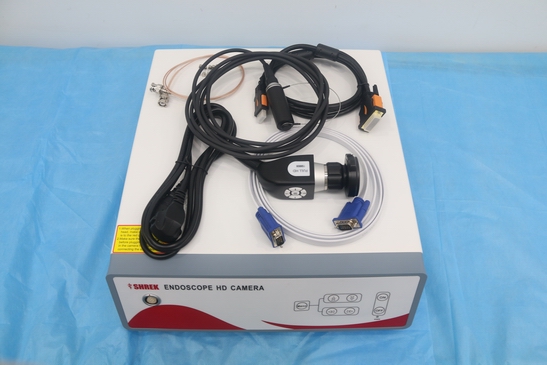Bringing Precision to Surgery - Laparoscope Camera System
Laparoscopic surgeries have revolutionized the field of modern medicine, allowing for less invasive surgical procedures with faster recovery times and fewer complications. A crucial component of laparoscopic surgery is the laparoscope camera system, which provides high-quality images of the surgical site for the surgeon to view during the procedure. In this essay, we will provide a comprehensive overview of the laparoscope camera system and its various components.

The laparoscope camera system consists of several components, including the camera head, the light source, the camera control unit (CCU), and the monitor. The camera head is the device that captures the images of the surgical site, and it is typically inserted through a small incision in the patient's abdomen. The light source provides illumination for the camera head, which is essential for providing clear and detailed images. The CCU is the control center for the camera system and is responsible for processing the video signal from the camera head. The monitor displays the images from the camera head in real-time and allows the surgeon to view the surgical site.
The camera head is perhaps the most critical component of the laparoscope camera system. It typically includes a lens, an image sensor, and a cable that connects to the CCU. The lens is responsible for focusing the light onto the image sensor, which captures the image and sends it to the CCU. The image sensor is typically a charge-coupled device (CCD) or a complementary metal-oxide-semiconductor (CMOS) sensor. CCD sensors tend to provide higher-quality images with better color reproduction, while CMOS sensors tend to be more affordable and power-efficient.
The light source is also an essential component of the laparoscope camera system. It typically consists of a xenon or LED bulb that provides bright, white light for the camera head. Xenon bulbs tend to provide higher-quality light with better color accuracy, while LED bulbs tend to be more energy-efficient and longer-lasting.
The CCU is responsible for processing the video signal from the camera head and converting it into a format that can be displayed on the monitor. It typically includes image processing chips, a video encoder, and various input and output ports. The CCU also allows the surgeon to adjust various camera settings, such as brightness, contrast, and color balance.
The monitor is the final component of the laparoscope camera system, and it is responsible for displaying the images from the camera head in real-time. It typically includes a high-resolution display, various input and output ports, and a built-in speaker.
In conclusion, the laparoscope camera system is a critical component of modern laparoscopic surgery, allowing for less invasive procedures with faster recovery times and fewer complications. The camera head, light source, CCU, and monitor all work together to provide high-quality images of the surgical site, allowing the surgeon to perform the procedure with precision and accuracy. With continued advancements in technology, we can expect laparoscope camera systems to become even more sophisticated and powerful in the future.



Leave a message